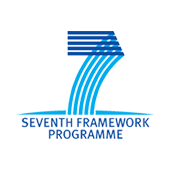Intensive Training Modules
Each partner organizes two intensive training modules of 1-2 days on specific topics to train ESRs in key competences necessary for the progress of the scientific and technological objectives of the ITN.
| CERM | Introduction to the use of product operators in NMR The aim of the course is to provide the basics of the product operator formalism to understand the building blocks constituting NMR experiments and to learn the ``tips and tricks'' to optimize experimental set-up. The course is constituted by lectures and practical sessions in front of advanced instrumentation. Instructors: Isabella Felli and senior scientists at CERM |
| CERM | 13C direct detection for biomolecular NMR applications The basic features of 13C direct detection NMR experiments and a series of examples in which they are used to obtain additional, in some cases unique, information to that available through 1H detected NMR experiments will be presented. The course is constituted by lectures and practical sessions in front of advanced instrumentation. Instructors: Roberta Pierattelli and senior scientists at CERM |
| CNRS-IBS | Fast and sensitive data acquisition methods for high dimensional NMR spectroscopy A 2-days practical training course is proposed to get “hands-on” experience on the recording of sensitive high-resolution multidimensional NMR experiments for the sequential resonance assignment of IDPs. The course consists of introductory lectures followed by practical sessions on the spectrometer (groups of 3 participants), and data analysis. Instructors: Bernhard Brutscher and senior scientists at CNRS-IBS |
| CNRS-IBS | Understanding the ensemble average: experimental characterisation of intrinsically disordered proteins from NMR data The course will entail the use of experimental NMR data to describe the conformational properties of instrinscially disordered proteins. The training course will present the necessary tools to develop a unified molecular representation of the disordered states based on the combination of the extensive sets of experimental data. Time-permitting some of these parameters will also be measured during a practical period of the course. Local conformational sampling will for example be determined on the basis of the experimental residual dipolar couplings and chemical shifts and long-range contact information between different parts of the disordered chain will be obtained from paramagnetic relaxation enhancement and SAXS data. Instructors: Martin Blackledge and senior scientists at CNRS-IBS |
| EMBL | Small-angle scattering from IDPs: hands-on data collection and advanced analysis methods The participants will collect the SAXS data from test proteins at the synchrotron radiation beamline X33 of the EMBL and they will be taught the SAXS data processing and analysis methods. Instructors: Dmitri Svergun and senior scientists at EMBL |
| EMBL | Small-angle scattering from IDPs: hands-on data collection and advanced analysis methods The participants will collect the SAXS data from their own IDPs or from test proteins at the high brilliance synchrotron radiation BioSAXS beamline of the EMBL, will be taught the advanced modelling techniques and will build the structural models from the SAXS data. Instructors: Dmitri Svergun and senior scientists at EMBL |
| VIB | Isotope labeling for NMR The advantages and disadvantages of different labels, sensitivity issues, their incorporation into proteins, cellular delivery of proteins, stability of cells, stem cells and their differentiation. Practical aspects of NMR detection, most useful NMR observables, with particular focus on in-cell NMR applications. Instructors: Nico van Nuland, Stefani Ramboarina, Denes Kovacs |
| VIB | Bacterial and eukaryotic expression systems This course will provide theoretical training on the different expression systems, the generation of expression constructs and expression/purification of recombinant proteins. Expression of recombinant proteins will be demonstrated in bacterial, insect and plant cells. Instructors: Angela Bekesi, Thu Thanh Tran, Denes Kovacs |
| UCAM | Determination of the structures of intrinsically disordered proteins using NMR spectroscopy This course will introduce current methods for the determination of structural ensembles representing the natively unfolded states of intrinsically disordered proteins. These methods are based on the combination of molecular dynamics simulations with structural information derived from NMR spectroscopy, in particular from paramagnetic resonance enhancement and residual dipolar coupling measurements. Instructors: Michele Vendruscolo and senior scientists at UCAM |
| UCAM | Molecular dynamics simulations with ensemble-averaged structural restraints This course will describe current methods for incorporating structural information obtained from NMR spectroscopy measurements in molecular dynamics simulations. The aim of the course is to introduce the use of NMR observables to define restraints to be applied to ensembles of molecules in order to obtain an accurate description of the conformational heterogeneity of natively unfolded proteins. Instructors: Michele Vendruscolo and senior scientists at UCAM |







